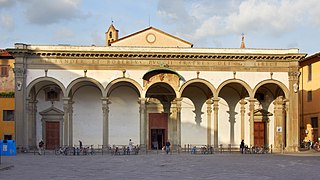
The Basilica della Santissima Annunziata is a Renaissance-style, Catholic minor basilica in Florence, region of Tuscany, Italy. This is considered the mother church of the Servite Order. It is located at the northeastern side of the Piazza Santissima Annunziata near the city center.
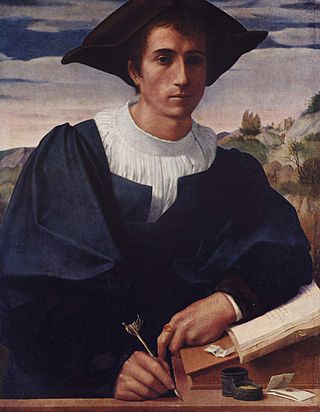
Franciabigio was an Italian painter of the Florentine Renaissance. His true name may have been Francesco di Cristofano; he is also referred to as either Marcantonio Franciabigio or Francia Bigio.

Villa del Poggio Imperiale is a predominantly neoclassical former grand ducal villa in Arcetri, just to the south of Florence in Tuscany, Central Italy. Beginning as a villa of the Baroncelli of Florence, it was seized by the Medici, became the home of a homicidal and unfaithful husband, and a lavish retreat for a Grand Duchess with imperial pretensions. Later given to Napoleon's sister, it was reclaimed by the hereditary rulers of Tuscany before being finally converted to a prestigious girls' school. During its long history, it has often been at the centre of Italy's turbulent history, and has been rebuilt and redesigned many times.

Tavarnelle Val di Pesa is a former comune (municipality) and since 2019 a frazione of Barberino Tavarnelle in the Metropolitan City of Florence in the Italian region Tuscany. It is located about 25 kilometres south of Florence.

Poggio Mirteto is a comune (municipality) and former Catholic bishopric in Sabina in the Central Italian region of Latium. Administratively Poggio Mirteto is in the province of Rieti and geographically this municipality is about 45 kilometres (28 mi) northeast of Rome and about 20 kilometres (12 mi) southwest of Rieti.

Matteo Rosselli was an Italian painter of the late Florentine Counter-Mannerism and early Baroque. He is best known however for his highly populated grand-manner historical paintings.
The year 1776 in architecture involved some significant events.

Giulio Parigi was an Italian architect and designer.
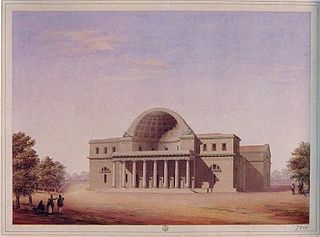
The Cisternoni of Livorno are a series of three large buildings in the neoclassical style at Livorno, in Tuscany, Italy. They were constructed between 1829 and 1848 as part of a complex of purification plants and storage tanks to the Leopoldino aqueduct; a fourth cisternone planned at Castellaccia was never built. The cisternoni, literally "great cisterns", provided Livorno — a city that is still today one of the principal ports of the Mediterranean — with fresh and, more importantly, clean water throughout the 19th and 20th centuries.
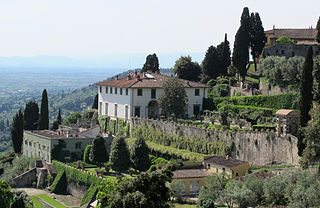
The Medici villas are a series of rural building complexes in Tuscany which were owned by members of the Medici family between the 15th century and the 17th century. The villas served several functions: they were the country palaces of the Medici, scattered over the territory that they ruled, demonstrating their power and wealth. They were also recreational resorts for the leisure and pleasure of their owners; and, more prosaically, they were the centre of agricultural activities on the surrounding estates. In 2013, the Medici villas were added to UNESCO's World Heritage list.

Marie Anna of Saxony, , was a princess of Saxony. She became Grand Duchess of Tuscany by her marriage to Leopold II, Grand Duke of Tuscany.

Andrea del Sarto was an Italian painter from Florence, whose career flourished during the High Renaissance and early Mannerism. He was known as an outstanding fresco decorator, painter of altar-pieces, portraitist, draughtsman, and colorist. Although highly regarded during his lifetime as an artist senza errori, his renown was eclipsed after his death by that of his contemporaries Leonardo da Vinci, Michelangelo, and Raphael.

Janet Ann Ross (1842–1927) was an English historian, biographer, and Tuscan cookbook author.
The archaeological area of Poggio del Molino is situated on the northern side of a headland that acts as a watershed between the beach of Rimigliano in the north, and the Gulf of Baratti in the south; to the northern border of the territory administered by the city of Piombino in the Italian Province of Livorno. The structure of Roman age spreads over a high plateau of about 20 m asl which dominates, in the west, the stretch of a sea between San Vincenzo and Elba and to the east, the metalliferous hills and plains of the Campiglia lagoon. The top of the hill is occupied by the beautiful Villa del Barone, built in 1923 by Baron Luigi De Stefano and Assunta Vanni Desideri, the daughter of Eugenio. From a paper of the 16th century, the "Bandita di Porto Baratti", and some archival documents we know that the Poggio owes its name to the mill which was a part of Torre Nuova, the building of coastal defense and a lookout built in the early sixteenth century by Cosimo I de' Medici, on the slopes of the promontory.
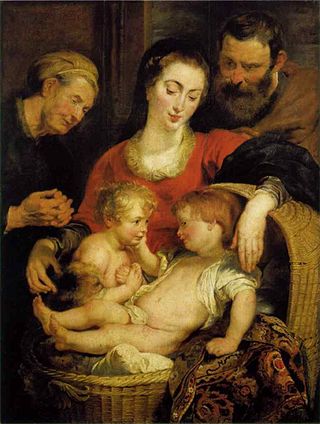
The Madonna of the Basket or the Madonna della Cesta is a painting by Peter Paul Rubens, dated to around 1615. It is now held in the Galleria Palatina of the Palazzo Pitti in Florence. Between 1799 and 1815 it was confiscated by the French and assigned to the Dijon Museum of Fine Arts.
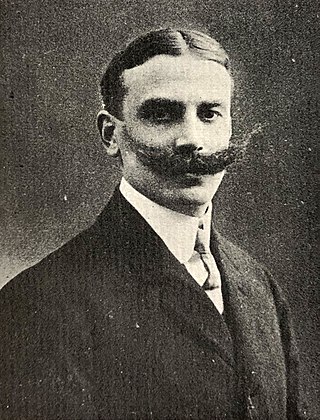
Giovanni Michelazzi was an Italian architect and one of the most important exponents of the Liberty style in Tuscany.

Matteo Marangoni was an Italian art historian, art critic and composer.

Gaspare Maria Paoletti was a Neoclassical sculptor and architect, active mainly in his native Florence, region of Tuscany, Italy.
Caterina Angela Pierozzi was an Italian painter active in Florence in the final quarter of the 17th century, documented as working for the Medici Grand Duchess Vittoria della Rovere, who was well-known for her patronage of female artists. Specialising in miniatures, she was one of only two female artists to be admitted to the Accademia e compagnia delle arti del disegno prior to the 18th century. As it stands, there is only one known extant work by her, a signed and dated miniature on vellum depicting the Annunciation.
















